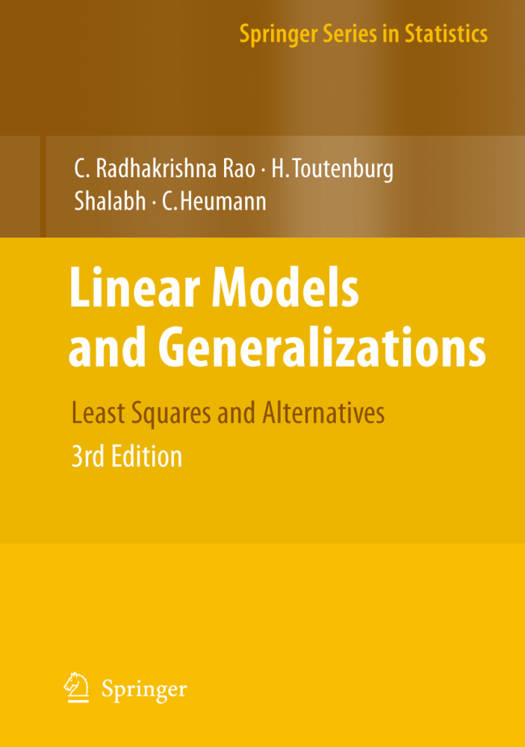
- Afhalen na 1 uur in een winkel met voorraad
- Gratis thuislevering in België vanaf € 30
- Ruim aanbod met 7 miljoen producten
- Afhalen na 1 uur in een winkel met voorraad
- Gratis thuislevering in België vanaf € 30
- Ruim aanbod met 7 miljoen producten
Zoeken
Linear Models and Generalizations
Least Squares and Alternatives
C. Radhakrishna Rao, Helge Toutenburg, Shalabh, Christian Heumann
€ 125,95
+ 251 punten
Omschrijving
Thebookisbasedonseveralyearsofexperienceofbothauthorsinteaching linear models at various levels. It gives an up-to-date account of the theory and applications of linear models. The book can be used as a text for courses in statistics at the graduate level and as an accompanying text for courses in other areas. Some of the highlights in this book are as follows. A relatively extensive chapter on matrix theory (Appendix A) provides the necessary tools for proving theorems discussed in the text and o?ers a selectionofclassicalandmodernalgebraicresultsthatareusefulinresearch work in econometrics, engineering, and optimization theory. The matrix theory of the last ten years has produced a series of fundamental results aboutthe de?niteness ofmatrices,especially forthe di?erences ofmatrices, which enable superiority comparisons of two biased estimates to be made for the ?rst time. We have attempted to provide a uni?ed theory of inference from linear models with minimal assumptions. Besides the usual least-squares theory, alternative methods of estimation and testing based on convex loss fu- tions and general estimating equations are discussed. Special emphasis is given to sensitivity analysis and model selection. A special chapter is devoted to the analysis of categorical data based on logit, loglinear, and logistic regression models. The material covered, theoretical discussion, and a variety of practical applications will be useful not only to students but also to researchers and consultants in statistics.
Specificaties
Betrokkenen
- Auteur(s):
- Uitgeverij:
Inhoud
- Aantal bladzijden:
- 572
- Taal:
- Engels
- Reeks:
Eigenschappen
- Productcode (EAN):
- 9783540742265
- Verschijningsdatum:
- 12/10/2007
- Uitvoering:
- Hardcover
- Afmetingen:
- 165 mm x 38 mm
- Gewicht:
- 1006 g

Alleen bij Standaard Boekhandel
+ 251 punten op je klantenkaart van Standaard Boekhandel
Beoordelingen
We publiceren alleen reviews die voldoen aan de voorwaarden voor reviews. Bekijk onze voorwaarden voor reviews.








